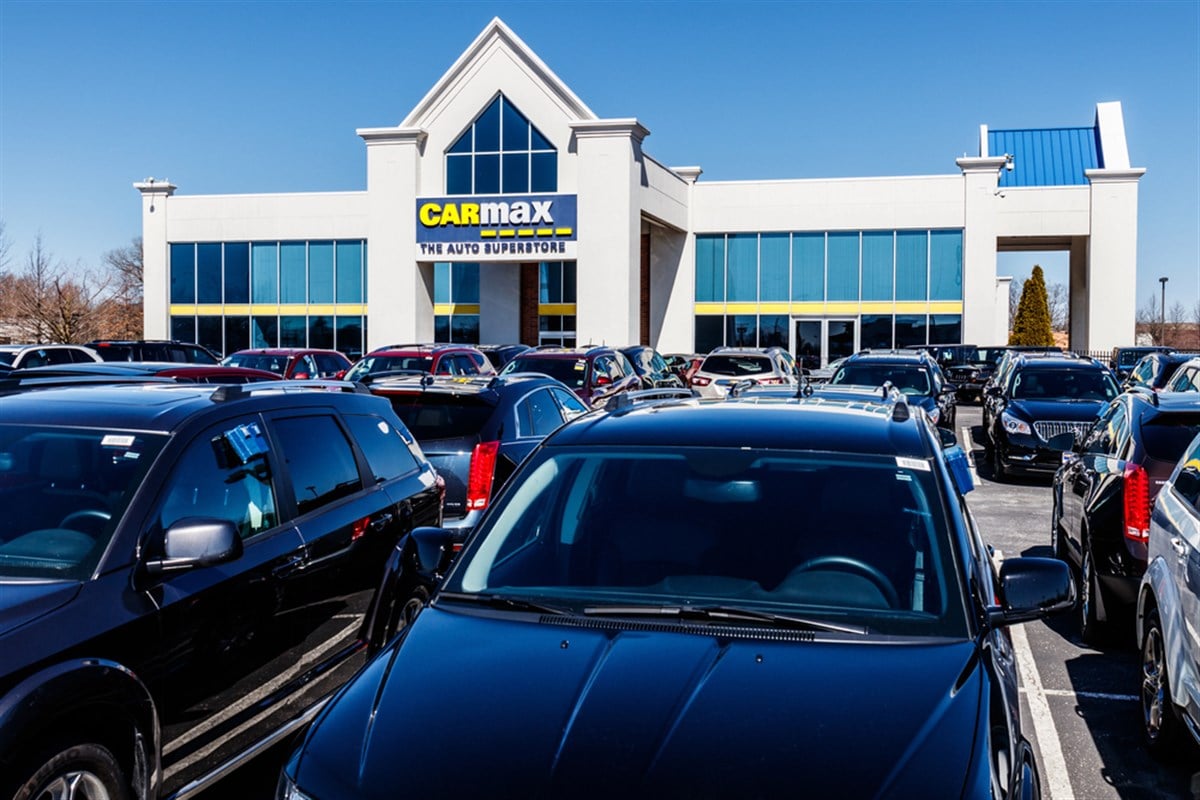
Shares of CarMax Inc. (NYSE: KMX) jumped by over 15.3% in a single day following the company’s latest quarterly earnings release. Investors in the know are already aware of what is happening to the car market, particularly the divergences between used cars and new cars. This divergence drives stocks like CarMax into a potential profit cycle today.
Similar trends can be seen in parts and maintenance names like Advance Auto Parts Inc. (NYSE: AAP) and AutoZone Inc. (NYSE: AZO). Both of these names have seen better treatment from both the overall market and Wall Street analysts recently, a trend that could spill over into the sentiment for stocks like CarMax in the coming quarters for investors to consider today.
By digging through the company’s earnings press release, investors will find out what is driving the stock’s price action and what is happening in the consumer market today. Due to the underlying implications, this insight applies not only to automotive stocks but can also be amplified to the consumer discretionary sector.
CarMax Earnings Highlight Key Divergence and Signal a Weakening Consumer Market
Realizing that today's interest rate cuts from the Federal Reserve (the Fed) won't have the same effect on the vehicle market as they did during the COVID-19 pandemic is critical for investors. When the COVID-19 pandemic drew in interest rate cuts, consumers weren't as tapped out on debts or delinquencies as they are today.
According to financial sector earnings, consumers are having trouble paying their credit card balances, so delinquencies have been on the rise lately. Because of rising unemployment and inflation in items like rent and groceries, the personal savings rate has fallen to negative, meaning discretionary payments will likely fall behind.
This extension is seen in the vehicle market, as a report shows car repossession rates are now up by 23% over the year due to these tightening financial conditions. This is where CarMax, a new and used car dealer, comes into play.
Investors will notice a few trends in the company's earnings press release. First, the number of vehicles sold on a wholesale basis (to dealerships) declined by 0.3% over the past 12 months. At the same time, used vehicle sales jumped by 5.1% during the same period.
This trend in CarMax's business doesn't end there. Due to the declines in car values at dealerships across the country, CarMax bought 61.4% more cars from these discounts. Knowing that they are better off keeping their used car than financing a new one during this environment, consumers sold 1.2% fewer vehicles to CarMax during the year.
The dynamic's main effect on CarMax can be seen in its financial services and lending division. Over the latest quarter, CarMax reported that its provision for loan losses increased to $112.6 million compared to $89.8 million last year.
Management cites the worsening loan losses across the industry as their reason for raising provisions, crystalizing the deterioration in the vehicle market due to weakening consumer finances.
How CarMax Pivoted Quickly to Profit Amid a Shifting Market Landscape
Investors would be surprised to see CarMax report a net 13.3% jump in its earnings per share (EPS) over the year. The reason EPS jumped higher despite the negative tailwinds forming around the industry can be attributed to management skills today, quantified in the business's cash flow statement.
Operating cash flows rose from a net outflow of $61.1 million last year to a net inflow of $501 million this year, driven mainly by a $280 million decrease in inventory values. This means management has shifted inventory away from potential losses it could deliver and is now buying strictly discounted dealership inventory to ensure profits.
Knowing that this strategy puts CarMax in a better position to outperform peers, management also set aside as much as $106.1 million to buy back its own stock this quarter.
Whenever management chooses to buy back its stock, it typically sends the message that it believes the company is cheap enough today and expects to see higher prices ahead.
However, the bullishness didn’t stop within the company, and Wall Street analysts decided to tag along for this potential uptrend. Those at Wedbush now see a price target of up to $95 a share for CarMax stock, daring it to rally by as much as 22.1% from where it trades now.
More than that, bearish traders seem to be bailing out of the company, as CarMax stock’s short interest has declined by over 5.8% during the past month and completed a downtrend over the past quarter. There seems to be a lot more upside left in this stock, and the fundamental state of the market supports it as a potential buy.





